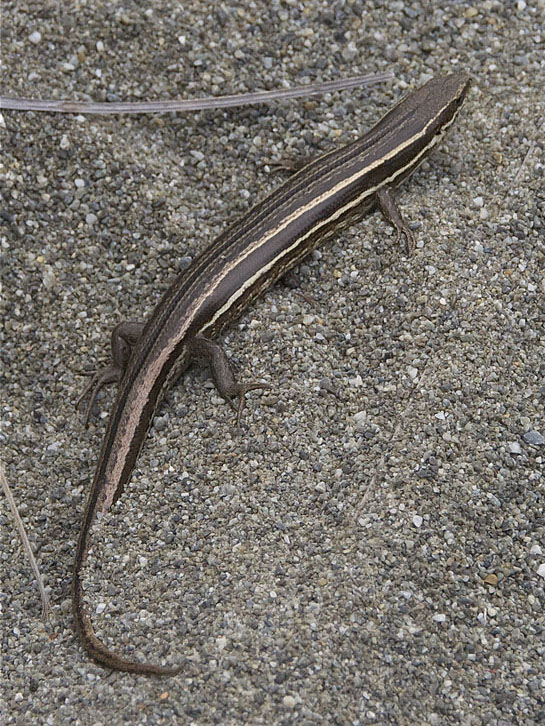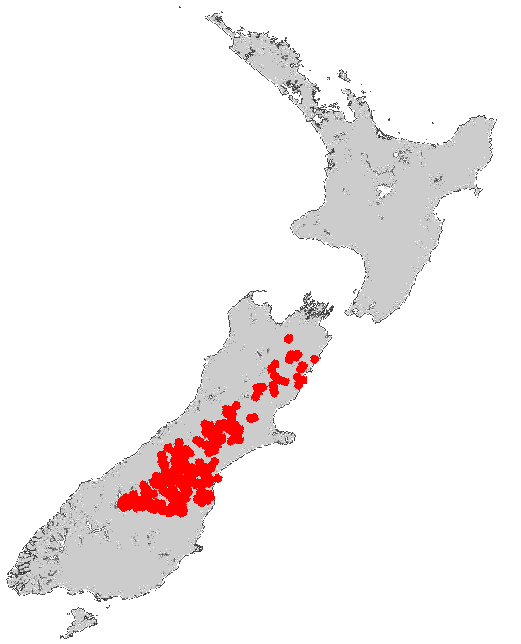McCanns skink
Status: Not threatened
Found along Canterbury, Otago, and Southland rivers from the coast up to 1700m above MSL.
Description
McCann’s skink (Oligosoma maccanni) mokomoko (Māori) is a small to medium endemic skink that grows up to 73mm. Its dorsal (back) is grey or light brown, either uniform, patterned or striped. If patterned, the pattern may be herringbone or chequered; if striped, the stripes may be smooth or notched. Mid-dorsal stripe, if present, may become broken, notched or wavy on the tail. Lateral surfaces with a broad dark brown stripe, upper, bordered by either smooth or notched thin white stripes; below this, grey or grey-brown. Ventral (belly) surfaces whitish-grey or yellow, usually uniform but may be finely speckled with black. Throat whitish-grey, usually finely speckled with black.
Being cold-blooded, it needs warmth to digest food and is commonly seen basking in the sun on warm rocks.
Ventral (belly) surface is usually speckled or uniform. The eyes are light olive-grey or brown, and those in Hawea/Wanaka have pale blue or green edge. The mouth is pink, and the tongue is pink with a grey tip.
- Marlborough/North Canterbury: from Arthur’s Pass north its medium sized and has simple transverse bands
- Mackenzie: Similar size as the Marlborough/North Canterbury, but the colour is very silvery grey, often with streaky markings and a verterbal stripe
- Tekapo: Smaller 55-60mm, and very dark colouring
- South Canterbury/Otago: In the Waitaki and Hakataramea Valleys some are striped.


More information
- Department of Conservation (includes distribution map)
- iNaturalist
- Te Ara
- New Zealand Herpetological Society
Conservation efforts
Note: trapping that removes larger predators such as weasels, ferrets, stoats, and cats has the potential to increase the population of mice, which can have a devastating effect on reptiles and invertebrates.
